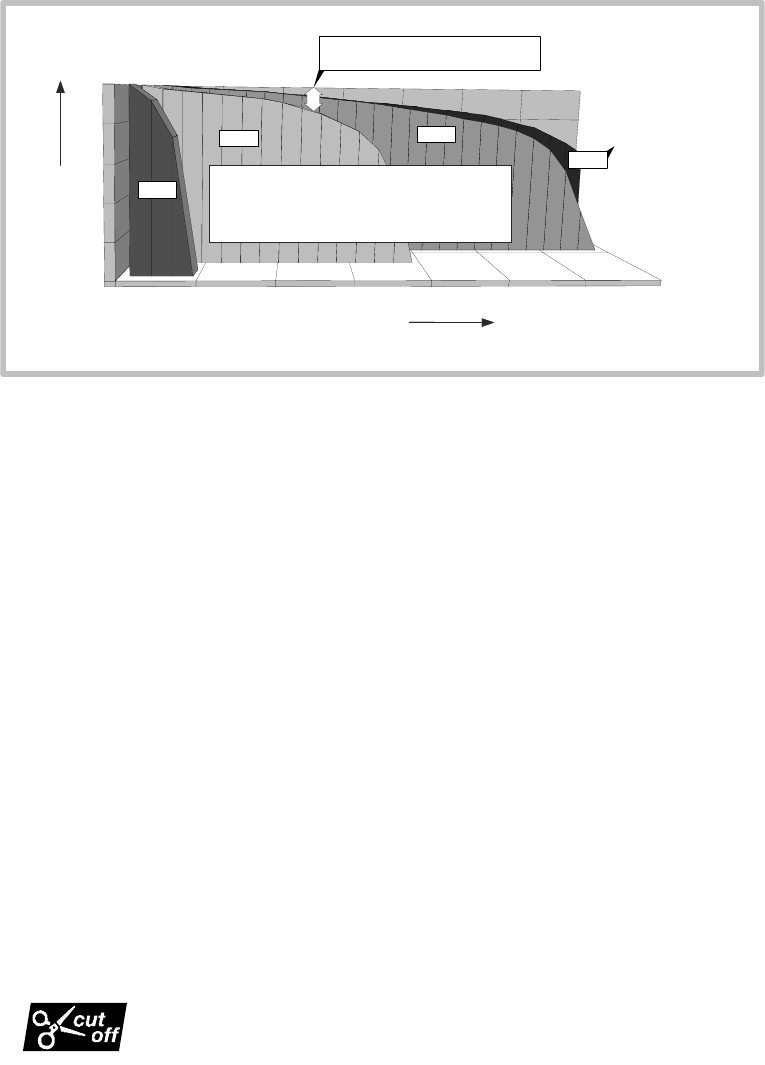Instruction manual

20
ECG provided by the manufacturer under consideration of the thermal load
of electronic components.
2.13 Thermal influences of
the system
components
The temperature must be assessed separately for the two system
components (ECG and lamp). In the case of the lamp, there are physical
laws that restrict the temperature range of an application, whereas in the
case of the ECG fixed limits must be set in order to ensure reliable
operation.
Apart from this, there are external factors such as the reciprocal influences
of ECG, lamp and luminaire and the selected installation site which have an
influence. Compliance with the specified limits and hence the guarantee of
operational reliability are the responsibility of the relevant luminaire or
system manufacturer.
There is a fixed correlation between tc-temperature, the temperatrure of
electronic components, the life of each component and hence the complete
unit. Thermal contact of an ECG to metallic parts of luminaire housings is
very positive due to good thermal conductivity.
The correlation between temperature tc of the measuring point, component
life and failure rate is crucial for an objective assessment of the reliability
and service life of an ECG. Information about tc-temperature and ECG
service life alone are not sufficient.
2.14 cut-off Technology
All QUICKTRONIC
®
control gear for operation of
T5/∅ 16 mm-fluorescent lamps FH
®
…HE and FQ
®
…HO
are equipped with cut-off technology.
After starting the lamp the electrode heating is being switched off. Lamp life
increases due to the reduced load of the electrodes. Therefore, cut-off
technology increases the lumen output of the luminaire and the lamp life.
And for the first time, cut-off technology is included in dimmable ECG
thanks to the new intelligent technology of QTi. Compared to Electronic
control gear without cut-off the power consumption of ECG with cut-off
technology could be reduced by another 5 to 7 %.
Surviving ECGs [%]
100
80
60
40
20
0
10 % loss at 50,000 hours
10°C lower operating temperature at point of
measurement virtually halves ECG failure rate
0 20 40 60 80 100 120 140
Hours of usage [thsd]
Temp. at point of
measurement t
c
50°C
60°C
70°C
90°C
Surviving ECGs [%]
100
80
60
40
20
0
10 % loss at 50,000 hours
10°C lower operating temperature at point of
measurement virtually halves ECG failure rate
0 20 40 60 80 100 120 140
Hours of usage [thsd]
Temp. at point of
measurement t
c
50°C
60°C
70°C
90°C
Surviving ECGs [%]
100
80
60
40
20
0
10 % loss at 50,000 hours
10°C lower operating temperature at point of
measurement virtually halves ECG failure rate
0 20 40 60 80 100 120 140
Hours of usage [thsd]
Temp. at point of
measurement t
c
50°C
60°C
70°C
90°C










